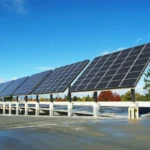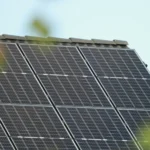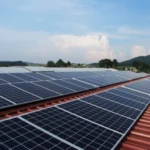PM Surya Ghar Muft Bijli Yojana 2025: Online Registration Made Simple
PM Surya Ghar Muft Bijli Yojana 2025: Online Registration Made Simple
India is stepping towards a brighter and cleaner future. Adoption of renewable alternatives along with Pradhan Mantri Campaigns of Swachh Bharat Abhiyaan, citizens are now more aware of their surroundings and for future resources too.
As we are heading towards a solar and cleaner future, the government has also started taking initiatives. With the PM Surya Ghar Muft Bijli Yojana, houseowners can also contribute towards a cleaner environment and enjoy free electricity.
This scheme aims to promote rooftop solar power and harness renewable energy. With the rising electricity bills, this will not only be budget-friendly but also environmentally healthy. In this blog, we’ll discuss how a consumer can avail this scheme and contribute to society.
What Is PM Surya Ghar: Muft Bijli Yojana?
Launched on February 29, 2024, by the Ministry of New and Renewable Energy (MNRE), PM Surya Ghar: Muft Bijli Yojana is a central government scheme investing ₹75,021 crore to support 1 crore residential households in installing rooftop solar systems.
Its goal is to provide up to 300 units of free solar electricity monthly per home while boosting India’s rooftop solar capacity.
This new initiative replaces the MNRE’s earlier Phase II rooftop solar programme. Under PM Surya Ghar, households receive a fixed cash subsidy, typically ranging from ₹30,000 to ₹78,000, credited directly into their bank account within approximately 15 days of verification. Developers also benefit from concessional bank loans via PSU banks at interest rates as low as 6.75%.
The scheme simplifies processes through the National Rooftop Solar Portal, where users can apply, choose vendors, register for a subsidy, and track grants in one place. It also includes stricter quality measures, ensuring systems comply with MNRE’s technical standards and IEC/BIS certifications.
Five Steps to Avail the Scheme
Here’s your step-by-step guide to getting free solar power under PM Surya Ghar:

Step 1: Register on the National Portal
- Visit the official portal – pmsuryaghar.gov.in.
- Go to the consumer page and select “Apply Now”.
- Register by entering your phone number and verifying with OTP.
Step 2: Verification and Details Filling
- After successful verification, enter your name, select state, district, discom, consumer no., and click on ‘fetch details’ for auto pre-filling of required information.
- Click on the next button to fill out and submit the application.
- Finally, enter your email and verify the same with otp and click ‘save’.
Step 3: Site Inspection & Installation
- Once you get the feasibility approval, select the vendor.
- The vendor will inspect your rooftop, install the solar panels, inverter, wiring, and bidirectional meter. This module must be commissioned in line with the technical standards set by MNRE.
Step 4: Submission & Commissioning
- Once the installation of the plant is completed, the vendor submits the installation details to you (i.e., consumer) for verification, which is supposed to be submitted to DISCOM.
Step 5: Subsidy Disbursal
- DISCOM does the Inspection and submits the inspection details to the consumer. After that, the consumer redeems the subsidy and submits to NPIA.
After commissioning, the subsidy is transferred to your bank account, usually within 15 days. If you took a subsidized loan, the amount may be credited to your loan account.
Once your system starts generating power, you can enjoy clean energy and lower electricity bills through net-metering benefits. Refer to our blog – (learning about net metering in depth).
Essential Documents That Are Required
Below is the list of documents that would be required while applying for the subsidy –
- Occupancy proof along with roof rights(for residential).
- Registered Sale Deed of property/ Registered GPA/Registered Lease
- Deed/Allotment letter (for businesses)
- Latest paid electricity bill (not older than 3 months)
- Pan card of the applicant
- Photo (Applicant)
- Adhaar Card
- Memorandum of Article(MOA), Company PAN, and GST certificate (for businesses)
This documentation ensures a smooth subsidy claim and faster processing through the system.
Benefits of the Scheme
This scheme can help the consumers in the following ways –
Lower Electricity Bills
A solar system installed under this scheme can generate up to 300 free units/month, often covering most or all household needs and drastically reducing grid dependence.
Affordable Cost via Subsidy & Loan
With a central subsidy of ₹78k for a 3 kW system and concessional loans from public sector banks at around 6.75%, the upfront cost is significantly reduced.
Clean Renewable Energy
Each rooftop solar system reduces carbon emissions—homeowners can power up with clean energy and reduce reliance on fossil fuels.
Quick Payback & Savings
Due to low net cost, most installations recover investment within 3–4 years, with the remaining 20+ years of savings being essentially free electricity.
Quality Assurance
The scheme enforces strict standards: IEC/BIS certification, technical validations, and commissioning inspections ensure reliability, performance, and durability.
How Smart Roof Solar Can Help
At Smart Roof Solar, we simplify the PM Surya Ghar application from start to finish:
- Assistance with Registration on the national portal
- Site evaluation & system sizing aligned with solar potential
- Vendor compliance with MNRE/BIS standards
- Installation coordination and commissioning support
- Subsidy claim & tracking on your behalf
- Post-sales support, including net-metering follow-up and maintenance
We partner with DISCOM-approved vendors to ensure top quality, smooth inspection, and simple subsidy release, so your solar journey is hassle-free.
Conclusion
PM Surya Ghar Muft Bijli Yojana is a landmark step towards democratizing solar energy in India. By empowering one crore homes with free and clean electricity and ensuring rigorous quality standards, the scheme accelerates the country’s move to a sustainable future. Under this programme, homeowners benefit from up to 300 units/month of solar power, reliable installation, and fast subsidy disbursals.
With Smart Roof Solar, navigating this scheme becomes easy. We handle all technical, regulatory, and administrative steps. Contact us today to go solar with zero stress, turn your rooftop into a power generator, reduce your bills, and contribute to India’s green energy journey.
FAQs
Q1. Can rental property owners apply under the scheme?
Ans: No, only owners with legal rooftop rights are eligible under PM Surya Ghar.
Q2. What happens to the subsidy if I opt for a loan?
Ans: Subsidy is credited directly into your bank/loan account; loan disbursal begins post-installation.
Q3. Is it mandatory to use empaneled vendors?
Ans: Yes, to qualify for subsidy and quality checks, only MNRE or state-approved vendors can install the system.
Q4. Can I claim a subsidy beyond 3 kW systems?
Ans: No, subsidies are capped at 3 kW; higher capacities are not eligible for central support.
Q5. What if I miss the installation deadline?
Ans: Applications not installed by the set cutoff (typically April 1, 2025, deadline extended) will be canceled, and you’ll need to reapply.
Suggested Articles

Selecting Solar Panels: Best Guide for Homes and Factories
Solar panels are a hot topic these days, as the cost of solar is finally approaching what the average family can afford.

How the RESCO Model Works in Solar: A Complete Guide for Industries
The RESCO model allows businesses to adopt solar with zero upfront investment. Under this model, a developer installs, owns, and operates the solar plant while you simply pay for the power you consume—making clean energy both affordable and hassle-free.

Latest 100 kW Solar Plant Price in Delhi | Subsidy, ROI & Payback
Thinking about installing a 100 kW solar system in Delhi? This 2025 guide breaks down the 100 kW Solar Plant Cost in Delhi, explaining price per watt, total investment, energy generation, and key benefits for industries and businesses.

500 kW Solar Power Plant Cost in UP 2025 | Latest Price, Subsidy & ROI
Thinking of setting up a 500 kW solar power plant in Uttar Pradesh? Discover the 2025 cost estimate, available subsidies, and expected ROI. Learn how commercial and industrial projects in UP can reduce energy expenses and achieve long-term savings with solar energy.

The Rise of Clean Energy: Solar Energy Trends in 2023
The solar energy industry is on the rise, as the demand for clean and renewable energy sources continues to increase. 2023 is shaping up to be a big year for the solar energy sector, as new technologies and innovations are expected to drive growth and expand the reach of solar energy.

6 Upcoming Renewable Energy Events in India You Should Attend
The World Environment Expo, 2022 is a business platform that allows national and international equipment

What Does 1 kWp Mean in Solar Power Systems?
1 kWp is a standard unit used to measure the capacity of a solar power system under ideal conditions. This guide explains what 1 kWp means, how much energy it produces, and why it matters for system sizing.

Solar for Industrial Use in India: Costs, Benefits & Energy Savings Explained
Solar for industrial use in India is rapidly transforming how factories manage energy costs and efficiency. This guide covers system sizes, costs, benefits, ROI, and how solar energy helps manufacturing units, warehouses, and industrial plants reduce power bills and ensure long-term sustainability.